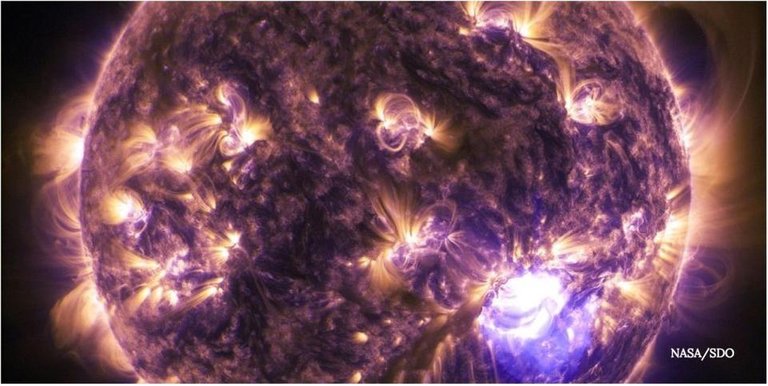The rotation of the Sun's sub-surface is downward and astronomers think that Einstein's special theory of relativity is responsible for this.
Although the sun is the nearest star to us, it still hides a lot of mystery. It seems that recently a puzzle related to the sun has been solved, and it has been held by a theory whose roots have grown in the light of Einstein's special theory of relativity.
Twenty years ago, solar astronomers realized that the sun's outermost layer was rotating slower than its interior. The matter is a bit strange. The polar region of the sun rotates faster than its polar region. This is explainable by a type of differential rotation. Slow surface explanation is difficult to find. It looks like an invisible ball in the sun Is trying to prevent the rotation by pressing the top layer of the.
However, recently a group of scientists from the United States Institute of Astronomy (IfA), Brazil, and Stanford University came forward to answer an answer to this question, and in the end, the subject of basic physics turned the strange orbiting of the sun into light. The brake is doing the job.
In this regard, Ifa's researcher, Jeff Kahn, said, "Our sun's rotation does not go smoothly, but we have seen that the sun's radiation creates a 'breakdown' in the sun, which is explained by Einstein's special theory of relativity."
The special theory of relativity assumes that electromagnetic photons (eg, light) carry a small amount of momentum. If a large amount of photon is emitted from an object, then this small velocity will no longer be small; they will be massively massive. The surface has lost a great deal of momentum due to its photons, which causes the top 5 percent of the Sun's motion to slow down. It's gechepayentim-Robertson (Poynting-Robertson) The effect of this process is known as the interplanetary dust in various celestial objects, such as asteroids in the asteroid belt in our solar system in the process has been observed in the past, sometimes the inner side of the tension felt rushed.
The effects of dust can be seen even in the sun's melting liquid, and this barrier of photons arising from the sun during its lifetime has produced considerable mysterious effects.
Using several years of data collected from NASA's Solar Dynamic Observatory (SDO), researchers can measure the wave propagating to the sun and calculate the thickness of the surface of the sun's obstructed sun. This method is called helioseismology, which is often used to measure earthquake waves. By calculating the severity of it.
Although the sun is not a planet made of solid rock, its thick plasma inner waves help to flow, causing vibrations on its surface and measuring this vibration from the earth. Thus, by applying heliosismology, researchers 'see' the inner much of our nearest constellation on the surface. Maybe not so visible. In this case, by applying Heliosismology we can calculate the sun's rays. Tarabhagera much slower than the outer layer of turns, the outer layer of the sun, how Einstein's special theory of relativity has been pressed.
In this regard, Jeff Kahn said, "The outer casing of the sun is very slow in torque, but over a period of 100 million years, this little torque has made a significant impact over 1,000 km on the outside." The results of his research have already been selected for publication in the Journal of Physical Review Letter.
Using the Sun as a laboratory for all other constellations, the ear's researchers believe such effects are effective in other stars, and it plays a huge role in the evolution of stars. Now, solar astronomers are intrigued by the extent to which these effects contribute to the sun's magnetic field. The magnetic field is all over the solar system Creates storms and eruptions that have an impact on the earth's many electromagnetic systems, artificial satellites, etc. In view of this, this study will help us to better understand the effect of various sun's affairs on our earth.
